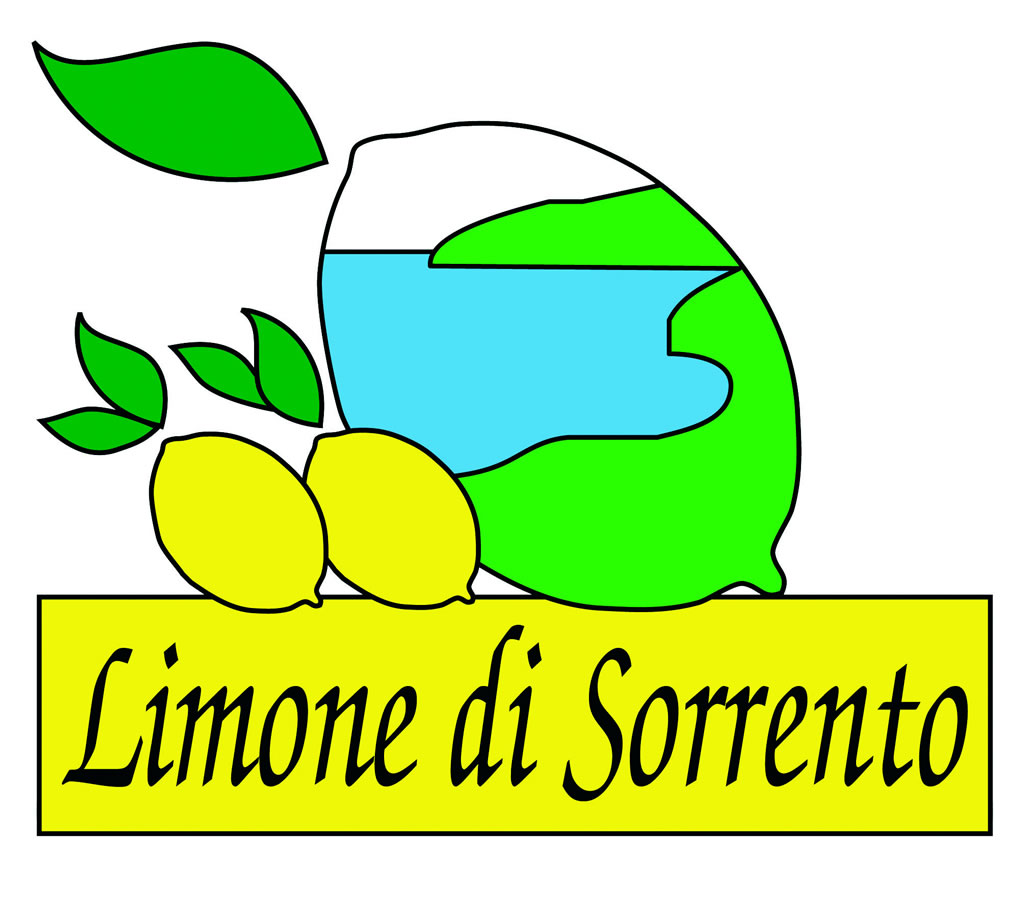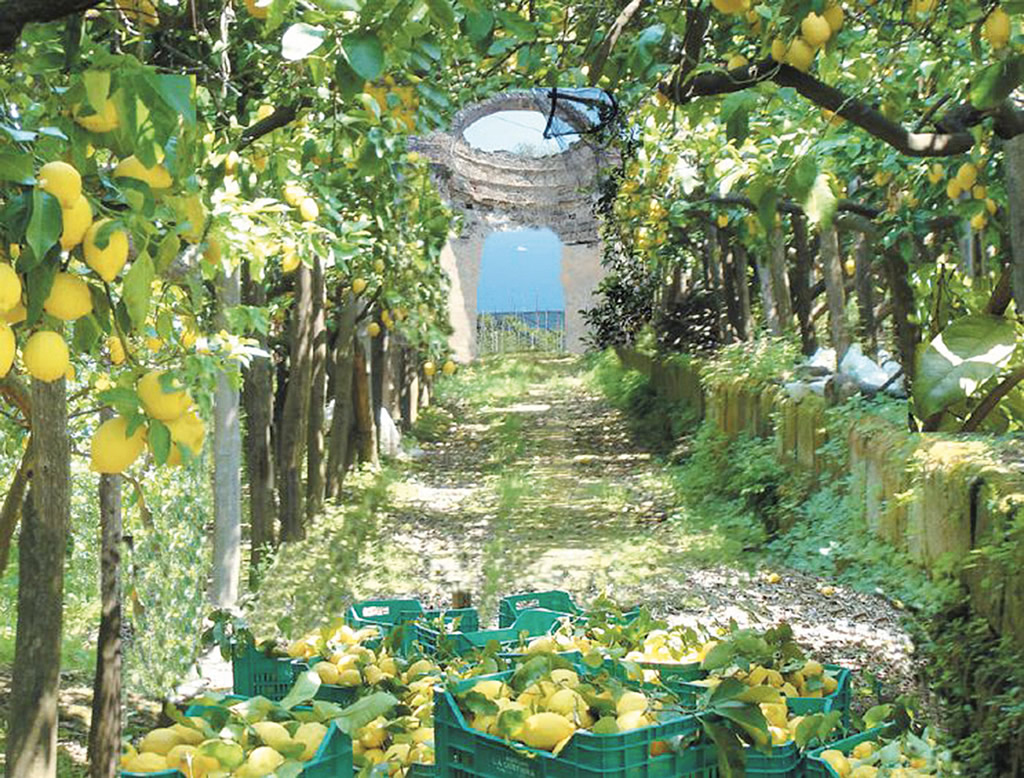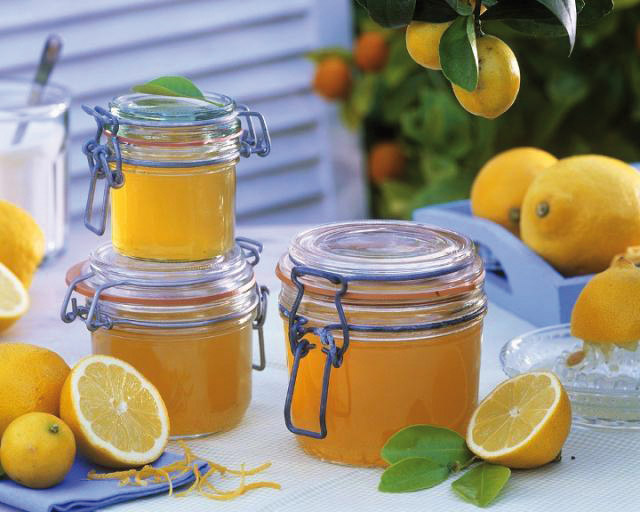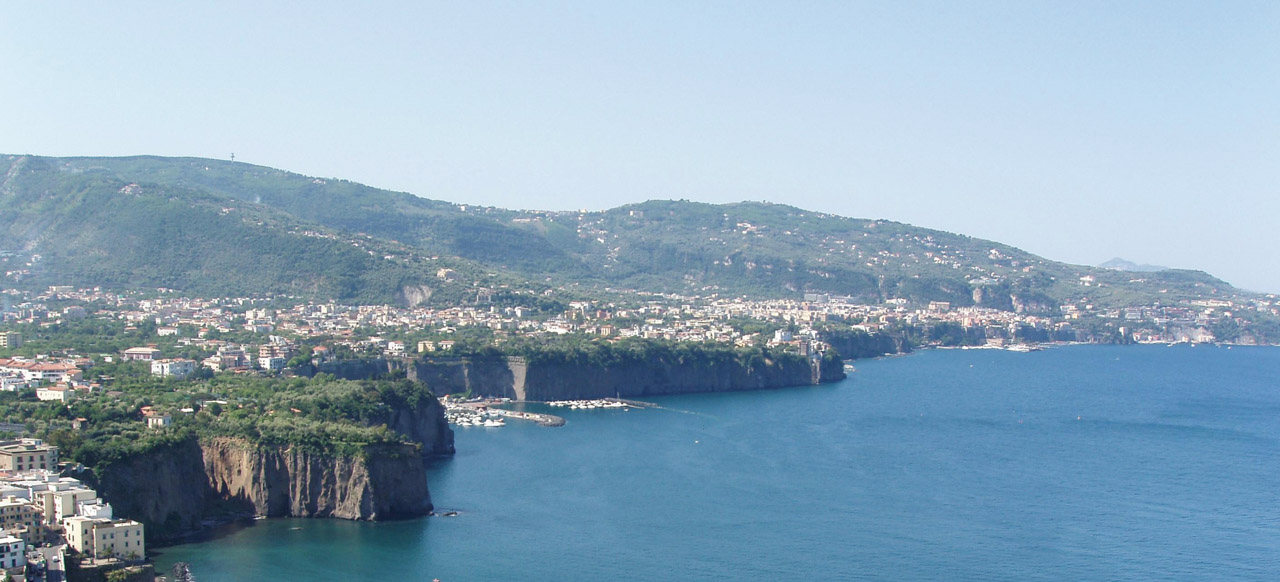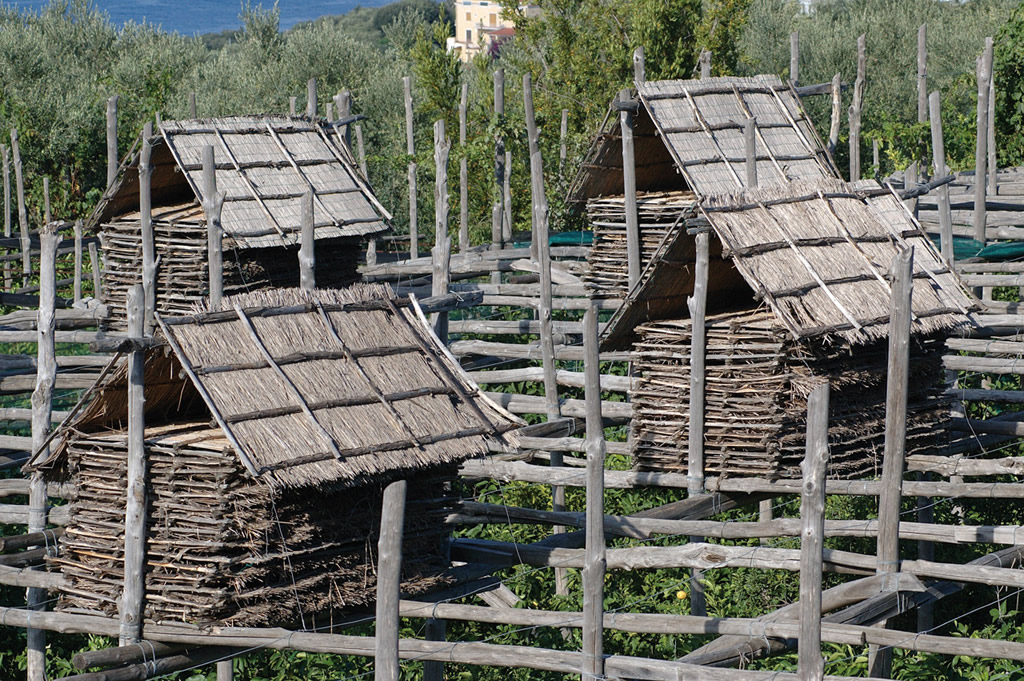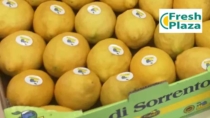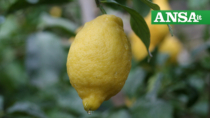Description
Limone di Sorrento PGI is a fresh lemon belonging to the species Citrus limon L., deriving from the local ecotype Ovale di Sorrento, also known as Limone di Massa Lubrense or Massese.
Production Area
The production area of Limone di Sorrento PGI is within parts of the territory of the municipalities of Vico Equense, Meta, Piano di Sorrento, Sant’Agnello, Massa Lubrense, Capri and Anacapri, in the Province of Naples, in the Campania region.
Production Method
Terracing is the usual cultivation method used for this product, with the plants enclosed within walled areas. They are grown with the “open vase” system, which is adapted to be a suitable undercover system: the trees are covered with a so-called pergolato sorrentino, a frame made from wooden poles, preferably chestnut, which is covered with reeds known as pagliarelle. This species can bear fruit up to five times a year and this is why it is possible to harvest over a long period of time, generally between January 1st and October 31st. The fruit must be harvested by hand so as to avoid any contact with the ground.
Appearance and Flavour
Limone di Sorrento PGI is characterised by its average-large size and elliptic shape, and it weighs no less than 85 g. Its peel is rich in essential oils, making it particularly fragrant, and it can be distinguished by its medium thickness and lemon-yellow colour. Its pulp is a light straw-yellow colour and extremely succulent, with lots of juice, high acidity and a well-balanced sugar content.
History
Limone di Sorrento PGI is the result of a longstanding tradition. The presence of lemons on the Sorrento peninsula dates back to the Renaissance period, as evidenced by various records, acts of sale, paintings and literary and botanical works from that time. The first specialised crops were planted by Jesuit priests in the 17th century. One of the very first cultivated crops, the “Gesù”, still exists in the Guarazzanno Basin today, between Sorrento and Massa Lubrense. The names by which the variety is known – Ovale di Sorrento and Massese –in fact originated from these two these two towns on the Sorrento peninsula. This lemon has been cited in works by Torquato Tasso, a native of Sorrento, Giovanni Pontano and Gianbattista della Porta, and in the 19th century, the historian Bonaventura Da Sorrento described how they were shipped around the world, particularly on cargo ships heading to America.
Gastronomy
Limone di Sorrento PGI should be kept in the refrigerator or in a cool, dry place. It is an extremely versatile product and can either be eaten fresh or used in a wide variety of dishes, from starters to main courses and desserts. The famous Limoncello is just one of the typical specialties that uses Limone di Sorrento PGI as a primary ingredient, which is obtained by infusing the lemon peel in an alcoholic solution. Limone di Sorrento PGI marmalade is another delicious specialty.
Marketing
The product is marketed as Limone di Sorrento PGI. It is sold loose or in rigid containers weighing between 500 g and 15 kg, made of plant-based material, cardboard or other recyclable materials. It is also available as a processed product, for example Marmellata di Limone di Sorrento PGI (marmalade) and Liquore di Limone di Sorrento PGI (liqueur).
Distinctive Features
Limone di Sorrento PGI is cultivated in the hills which roll down to the sea and is grown under traditional frames which protect the plants from adverse weather conditions, as well as delaying the ripening of the fruit; this ensures that the lemons can be harvested gradually throughout the year.



